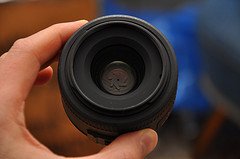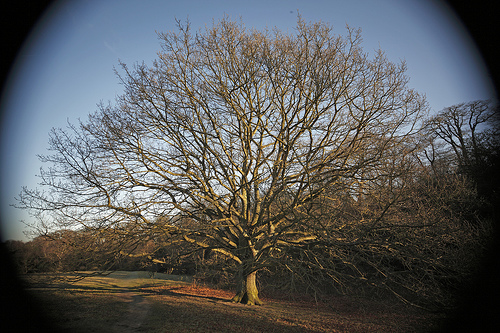The camera aperture is one element in the camera which perhaps has the most effects on your picture. Here’s a collection of some of these effects caused by the lens aperture. So the next time you use a wide or a small aperture, know that you are not changing the exposure.
-
Depth Of Field And Aperture
The primary purpose of aperture settings on the camera is to attain depth of field. The depth of field refers to the area of sharp focus in a photograph. The aperture plays an important role in determining the depth in the composition. The smaller the aperture, more is the depth in the composition thus, putting everything in sharp focus. On the other hand, a wider aperture enables you to achieve a shallow DOF — effectively focused subject amidst defocused background and the foreground.
-
Aperture Is Used For Creating Beautiful Bokeh
Bokeh is the terminology for the aesthetic blur achieved at shallow depth of field. Bokeh is the the way the lens renders out-of-focus points of light. When the camera is tuned for shallow dof and there is an effective brightness in the background of the subject (due to lights and reflections), the camera lens renders beautiful imagery of the out-of-focus points termed bokeh. DOF and the bokeh are two different things. Check out the difference between the bokeh and DOF here.
-
Aperture Is Not Used For Exposure
As contradictory as it sounds, aperture is not used to control the exposure. Not until you set the camera to fully manual mode. On other modes like the aperture priority mode, the fine-tuning the aperture helps in achieving the desired depth of field. The aperture priority mode offered by the camera is a semi-auto mode. Thus, when the user fine-tunes the aperture, the camera intelligently handles the rest of settings (like shutter-speed and even ISO) for ensuring proper exposure for the scene.
-
Chromatic Aberration Is Not An Aperture Effect
The chromatic aberration distorts the color information of the image by producing the fringes of colors along the boundaries that separate dark and bright parts of the image. The chromatic aberration is caused due to the failure of a lens to focus all colors to the same convergence point and not because of in-optimal aperture. The chromatic aberration is not a side-effect of a small aperture but of the lens optics viz. glass.
-
Aperture Can Be Used For Vignetting Effect
Vignetting is the technique of reducing the brightness of image at the edges, so as to draw the viewer’s attention to the center of the frame. At other times it is considered an unwanted artifact. The vignetting effect can be achieved by using the special lenses (or filters) and also during post-processing.
When a photographer uses the special lenses for creating the vignetting effect in camera, the aperture plays a crucial role in darkening the edges. The darkening can be gradual or abrupt, depending on the lens aperture. The smaller the aperture, the more abrupt the vignetting as a function of angle. On the other, there are some lenses which produce undesirable vignetting effect, which can be controlled or completely cured by a reduction in aperture of 2–3 stops.
-
Aperture Results In Loss Of Sharpness
When you are using a wide aperture, the depth of filed is very limited. The areas in the background and foreground of the focal plane will be blurred. As you close down to a smaller aperture, diffraction rolls in killing the sharpness.
-
Diffraction Spikes On Small Apertures
On smaller apertures the diffraction becomes increasingly prominent. This can be used for some very creative effects. This diffraction spike can be used as a creative technique while photographing the lights (or any source of light for that matter) to get the star-light effect. You can generate the star lights by resting the camera on the tripod, focusing on lights and tuning the camera to a very small aperture. This results in scattering of lights from the light source, forming beautiful star like formations of the diffracted lights.
-
Understand The Optimal Aperture
Optimal aperture is the point beyond which the image-sharpness reduces and the impact of diffraction becomes profound. The optimal aperture varies with the camera lens and you will have to run your own tests to figure out the sharpest aperture.
What other effects of aperture do you notice?






Coming back to this…
My basic problem with this article is that it will mislead some photographers into thinking that there is not a relationship between exposure and aperture, from the beginning of the article: “So the next time you use a wide or a small aperture, know that you are not changing the exposure.” If you are using a manual mode, yes, you are. Speaking of being lawyerly, such a statement clearly assumes that the photographer is not using manual mode and in fact does not know what changes exposure (else they would not need be told such a basic, if misleading, piece of information).
As I said – there is no less complicated way of thinking about exposure than in terms of what it actually means. Some of the actual effects of changing aperture are as you describe but others (chromatic aberration once again) are dead wrong.
I do not think it a credit to the community to assume people can’t understand the relationships between aperture and exposure. Even the camera makers help nudge people in this direction by labeling control some control screens on basic DSLRs. Even if they didn’t, though, “the entry level people” are certainly not being helped if the “powers that be” who try to guide them through the process of learning…think it’s not worth trying to teach them properly!
I think the comment that I am being lawyerly is indefensible when it does seem that in the face of solid info that contradicts the article it has not been amended and instead the focus is on appearances, rather than substance. That is the very essence of a rhetorical device.
I have to agree with Edwin Herdman.
“Aperture Is Not Used For Exposure”
This is so wrong I’m simply stunned. You might choose not to use aperture to control exposure, however to say that it is not used for it is simply not true and misleading.